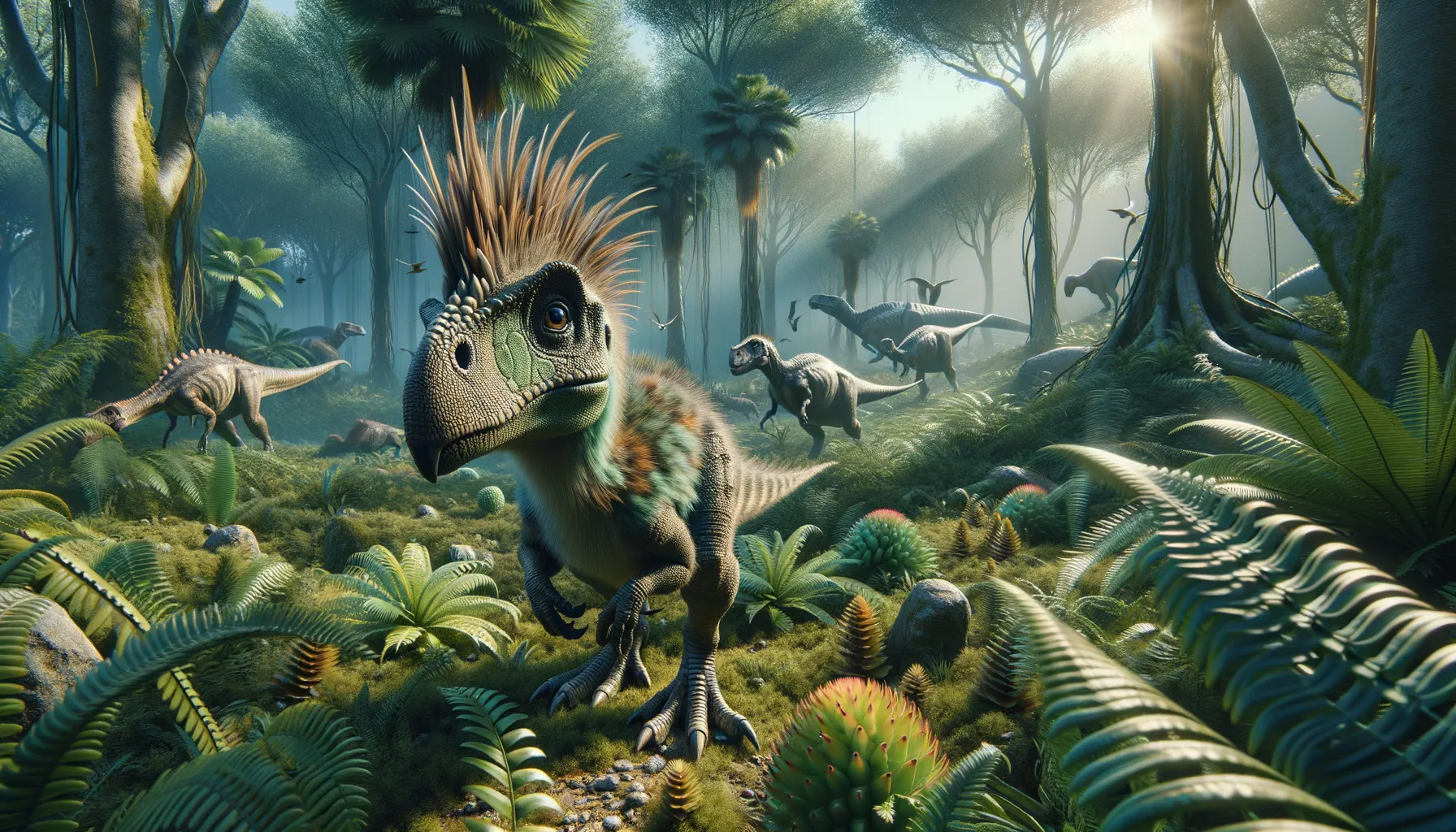
Pegomastax
Tiny dinosaur with a powerful beak.
Period
Jurassic
Length
Roughly 2 feet long.
Height
Around 1 foot tall.
Weight
Approximately 10 pounds.
Pegomastax was a small dinosaur, known for its distinctively spiky teeth and parrot-like beak. This herbivore thrived during the early Jurassic period, showcasing an unusual mix of features that made it well-suited for a life of foraging amidst lush prehistoric vegetation. Despite its diminutive size, Pegomastax played an important role in its ecosystem, interacting with a variety of other dinosaurs.
Diet
Pegomastax primarily fed on plants, using its beak and sharp teeth to break tough vegetation. Its diet likely included seeds and softer plant material, making it well-suited for its forested habitat.
Hunting
Being an herbivore, Pegomastax did not hunt other animals. It foraged for plant material, relying on its beak and teeth to gather and process food.
Environmental challenges
Surviving in the early Jurassic era meant coping with fluctuating climate conditions. Pegomastax had to navigate changing landscapes, which involved adapting to different types of vegetation. Predatory threats from larger carnivorous dinosaurs also posed a significant challenge for its survival.
Speed
Pegomastax was relatively slow, relying on agility in dense foliage.
Lifespan
Lived up to 10 to 15 years in the wild.
First discovery
Discovered in 2012 in rocks from South Africa.
Fun Facts
- Pegomastax means 'strong jaw', a fitting name given its characteristic sharp teeth.
- Unlike many large dinosaurs, Pegomastax was quite small, roughly the size of a housecat.
- It lived during the Early Jurassic period, about 200 million years ago.
- Pegomastax had fangs that were likely used for defense or display rather than eating meat.
- Despite its fierce appearance, Pegomastax was a herbivore, feeding mostly on plants.
- Its fossil was discovered in South Africa, adding to the evidence of diverse dinosaur species in that region.
- The unique features of Pegomastax suggest it may have had cheeks to help hold food in its mouth while chewing.
Growth and Development
Like many dinosaurs, Pegomastax likely hatched from eggs and went through a period of rapid growth. Juveniles would have learned to forage from a young age, developing skills needed to find food in dense vegetation.
Habitat
Pegomastax lived in areas dominated by forests, where it could find plenty of foliage to feed on. The environment would have been bustling with a variety of species, providing both challenges and opportunities for interaction.
Interaction with other species
Pegomastax coexisted with other herbivorous dinosaurs, competing for similar resources. It also had to remain vigilant against predators, forming part of a complex food web within its ecosystem.
Natural lifespan
Its natural lifespan ranged from 10 to 15 years depending on environmental conditions.
Reproduction
Pegomastax likely reproduced by laying eggs, as inferred from other dinosaur species of its size and era. The care for its young is less known, but it might have included some degree of parental protection in the early stages.
Social behaviour
While specific social behaviors of Pegomastax are unknown, it may have lived in small groups or pairs, which is typical of many small herbivores. Group living could have provided protection against predators.
Fossil locations
Fossils of Pegomastax have primarily been found in South Africa, providing crucial insights into its anatomy and lifestyle. These finds highlight the diversity of small herbivorous dinosaurs during the Jurassic period.
